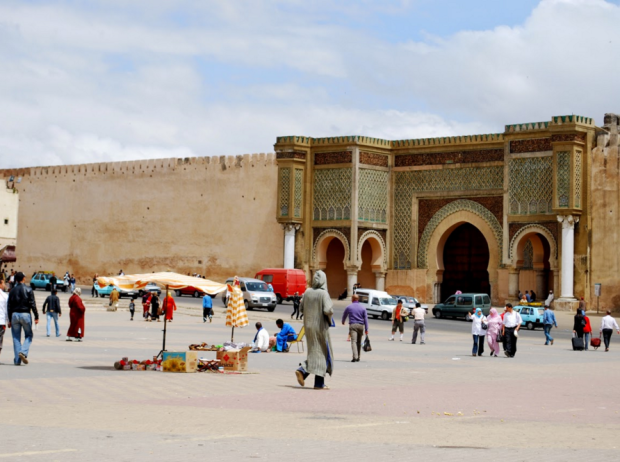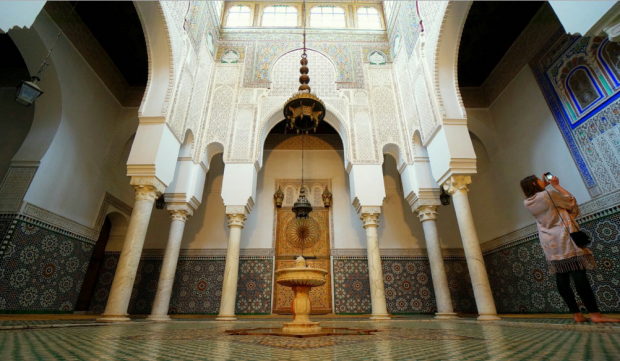1 Day in Meknes, the Moroccan Versailles
Morocco is one of my favorite countries of all time (that’s why I have already been there not once but twice) and it’s not very difficult to understand why: the golden sand beaches, the delicious traditional cuisine, the beautiful saharian desert, the warm Moroccan people, the colourful old medinas, the vibrant exotic markets and the gorgeous snown peaks are just some of the reasons that make a trip to Marocco an incredible experience to remember and talk about for a long time.
That’s why this destination is becoming more and more popular, especially the cities of Fes, Marrakesh and Rabat, three of the four Moroccan imperial cities. But what about the other one? The other one is Meknes, much less known as its sisters but still as interesting as them. Meknes is just a short and quick train, bus or taki drive from Fes and it’s mostly known because of the impressive constructions left there by the infamous sultan Moulay Ismai, who turned Meknes into the capital city of Marocco. As he was known as the Moroccan sun-king, Meknes is known as the Moroccan Versailles.
In this article, I’ll show you what to do and see in Meknes for a day. Ready?

El Hedim Square and Bab El Mansour // Source: Marrakesh Day Trips
To explore Meknes, I highly recommend you to join a walking guided tour, which will take you to every place of interest in the city for a very affordable price (for example, our guide, who was an offical one, just asked for 100dh – something like 10€ – to guide my entire family – 6 people – for an entire day). Most tours start in front of the ex libris of Meknes, Bad Mansour, a beautifully decorated gate crowning El Hedim Square, the center of the city and kind of a Jemaa El Fna Square in miniature (despite the fact that the Jemaa El Fna Square is totally irreplaceable).

Bou Inania Madrasa // Source: Roland Wich
The first stop of our tour was Bou Inania Madrasa, one of the most beautiful buildings that I had the chance to visit in Morocco. The harmony of the geometrical lines, the beauty of the colorful tiles and the peace of the inner courtyard left me totally breathtaken. It feels that I could be there for hours admiring every single little detail that makes this place such a special one.

Royal Stables // Source: Sentio
Then, after passing by the jewish quarter of the city and by two of the gates of its walls (Bab El Khémis and Bab El Kari), we headed to the Royal Granaries and Stables, right in front of the Agdal Tank. The complex, which was also built by Moulay Ismail, is worth the visit because of its huge dimensions. The stables, for example, were abble to accommodate 12000 horses. I have to admit that when I first read this on a guidebook, I was a little bit skeptic about it, however, when I finnaly got there, I immediatelly saw how wrong I was.

Moulay Ismail Mausoleum // Source: David Mbyrne
After visiting the Royal Granaries and Stables, it was time to have lunch and then, we finnaly made it to the Moulay Ismail Mausoleum, an amazing old building that is composed by three simple inner courtyards, a mosque and the tombs of the infamous sultan, his first wife and his first son. Moulay Ismail’s last resting place really shouldn’t be missed if you want to see the best that Meknes has to offer.

Kara Prision // Source: Ecalator
Last but not the least, we headed to the Kara Prison, an huge underground prision where 50000 slaves bellonging to Moulay Ismail were kept, most of who were christians. Above the huge complex there is a small building called the Ambassador’s Hall, where ambassadors from all around Europe came to try to rescue their compatriots.
After the tour, go back to El Edim Square, sit down on one of the many cafes, order a mint tea or an orange natural juice and then drink it calmly while watching he world passing by. If you feel that you still have energy (and time) to explore a little bit more, I can recommend you a trip to the nearby roman city of Volubilis, a very well conserved roman city that was known during its times of prosperity as the end of the Roman Empire.




Cool! I think I’m going there soon! This got me excited
LikeLike
Thank you a lot. Inspiring others to get their asses off the sofa and explore the awesome world where we live is my biggest objective as a blogger. I’m really happy for your comment.
LikeLike
I love Meknes. During my visit in Morocco, I could say th a Meknes is my favorite city I the country. It’s calmer ad quilter compared to its neighbour, Fes and the phenomenal Marrakech, but it has many things to offer to its visitors. I wish to back there someday
LikeLike
That’s true. Meknes is much more quiet and clean than its sisters Fes and Marrakesh, not to mention the much lower quantity of tourists. I also would love to return there soon! Maybe one day!
LikeLiked by 1 person